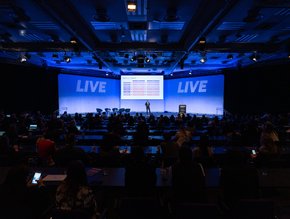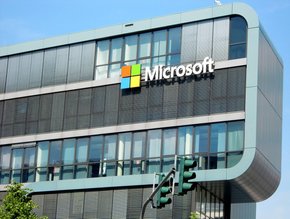Why should energy companies look to transition to SAP ECC?

As we move towards 2027 and SAP’s planned reduction in support levels for SAP ECC, it is becoming increasingly important that integrated energy companies start putting their response plans in place. These are critical systems after all. Invoices are generated, supply chains operated, and maintenance carried out using SAP.
Energy companies can’t afford to simply bury their heads in the sand and hope that the deadline is extended and the problem postponed, the risks are too great. Being left without regular ERP updates, service and support is, after all, a non-starter. They must act now.
In doing so, planning ahead to decide whether to opt for a greenfield implementation of a new ERP system, a brownfield migration to SAP S/4HANA or a hybrid is key.
Starting with a clean slate
Greenfield projects that start from scratch can have a wide range of benefits depending on an organisation’s specific needs. They don’t have to deal with legacy systems, and businesses have complete freedom in redesigning their processes and deciding on their direction of travel.
If an organisation’s existing solution no longer meets its current business needs, its data quality is poor or it needs to redesign its organisational structures then a new implementation could be the best option.
It may take more effort but the end result is a solution that is designed to meet the organisation’s operational requirements and can easily be adapted as that business evolves. Enterprises also have the benefit of clearly-defined business processes and a clear and complete set of documentation that will make it easier to support the solution.
On the flip side of the coin, companies will likely lose their historical data. It takes some thinking ahead to maintain access to this data and to ensure legal compliance, but typically that is not a big deal or major detractor.
The brownfield alternative – use the same structure but drive enhanced benefits
In contrast to the greenfield option, a brownfield implementation of SAP S/4HANA begins with the existing system, just with some key elements changed.
This approach is likely to be less expensive for businesses than rolling out a brand new project since the features that work well for the company don’t have to be rebuilt from scratch. Added to that, it can be accomplished without disturbing an existing ERP implementation.
However, this kind of approach must be executed all in one go, and that can be difficult if the transitioning company has limited tolerance for downtime. Equally, the final set-up can be unwieldy and rigid. The organisation is focused on carrying out conversions but is effectively taking all its baggage, typically including data, processes and code, with it. That may, on one level, reduce long-term agility and it will certainly make very little sense if the business has changed significantly over time and the platform contains customisations for outdated business models.
Moreover, today’s favoured ERP implementation model keeps the core ‘clean’ – developments are executed on a specific platform and not in the core. It’s important to reference that applying this approach to a migration necessitates a fair amount of rework, something which could potentially be done in a second implementation phase. But consider also that making such changes in a new and operational system can elevate operational risks, mitigated often by extra rounds of testing that slows the pace. Some have found that the lack of agility from this approach might mean that functional parity or simplicity may take longer to achieve overall.
A hybrid approach may represent the best way forward
Each approach has its pros and cons, but there is an alternative way forward where the system is separated from its data, simplifying the migration process and unlocking the potential of structural changes.
With this method, data is transferred by SAP or its partners from an ERP system or systems to a new SAP S4/HANA implementation. The approach provides flexibility by enabling businesses to re-use those parts of their existing ERP system that they like, while redefining others. Typically, this is done by application, enabling the business to redesign procurement and logistics, for example, while keeping finance and sales and marketing modules in place.
It is a great method for businesses that are scaling up and looking to go live in phases either by bringing new business units online or expanding into new countries. They get the option to leave behind large volumes of old data that may not be needed. The approach also helps reduce the risks involved in a big bang ‘go live,’ and because it reuses some application areas, the time and expense taken over re-implementation.
Regardless of the final choice they make, businesses undertaking the migration will need the help of specialists who can evaluate existing processes and identify process improvement opportunities that are ripe and ready for execution to bring immediate benefit and also to simplify the transition to S/4 HANA.
There is a range of options on offer. All businesses are different, and, for each of them, the right choice of migration path, whether that be greenfield, brownfield, or a hybrid of the two will be determined by the nature of their organisation and its specific circumstances. The one certainty is that businesses cannot afford to do nothing with the 2027 SAP deadline looming. Yet, there is a lot to weigh up in choosing the right migration path. The good news is if they get the decision right and follow the right implementation process, organisations will lay the groundwork for a successful future.






